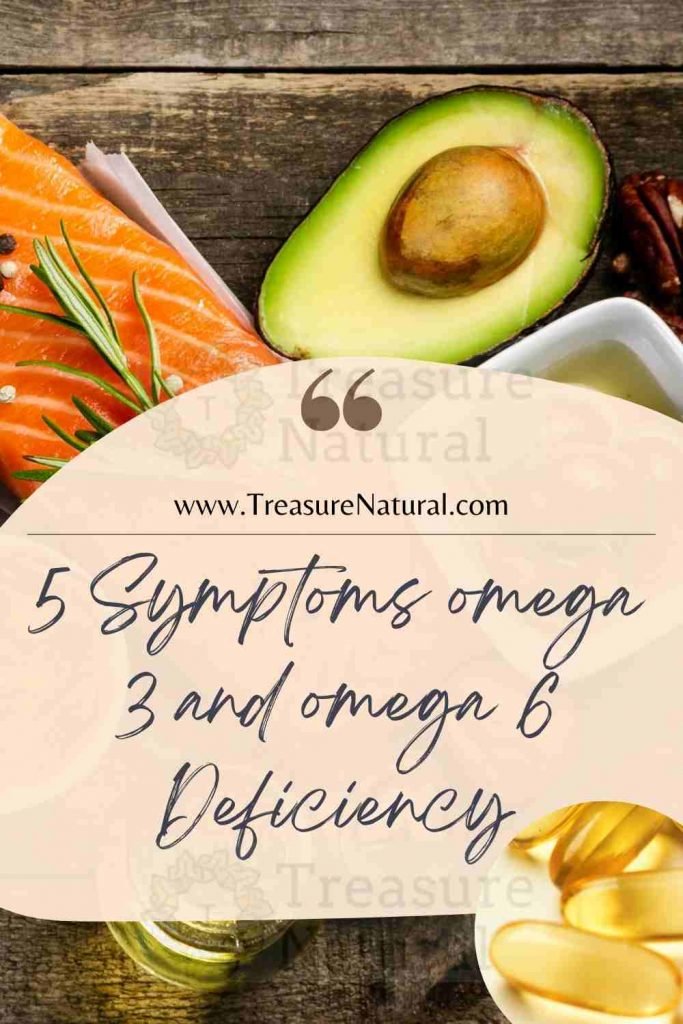5 Symptoms of omega 3 and omega 6 Deficiency

Omega 3 and 6 are two fatty acids that our body does not produce, but which it needs to perform certain functions. If there were any shortcomings of the same, in fact, you will notice
Omega 3 and omega 6 fatty acids are essential in all healthy diets. It is possible that, until now, you have never paused to reflect on it: we are talking about fundamental components for our cells that the body cannot synthesize.
Strange as it may seem, however, many people avoid them because they are fat. These can be found in the following foods:
- Avocado
- Fish
- Peanuts
- Eggs
- Olives
For this reason, it is often difficult to take them as it is thought that they make you fat when, in reality, our body needs a regular intake of these fats considered good.
Once stored by the body, in fact, they facilitate multiple functions, including metabolism and other vital processes essential for our health.
In this article we propose to increase the doses of omega 3 and 6 fatty acids. You will notice the benefits and your body will be grateful.
What actually are omega 3 and 6 fatty acids?
We know perfectly well that today there are many products artificially enriched with omega 3 and 6 fatty acids. We have juices, milk and butter, all foods to which these components are added.
We cannot deny that this process is of great help. However, given that these fats are not produced by our body, it would be perfect to assimilate them through natural sources such as, for example, salmon, peanuts, flax seeds or broccoli.
- Linoleic acid (or omega 6) is the most important long-chain fatty acid, found mainly in all types of seeds, nuts and oils such as sunflower.
- Omega 3 fatty acids, on the other hand, are found in oily fish, shellfish, legumes, olive oil, walnuts or almonds.
- Both omega 6 and omega 3 fatty acids are structural components of cell membranes and are useful for an infinite number of organic processes. Furthermore, they are a very important source of energy.
Symptoms of deficiency of omega 3 and omega 6 fatty acids
1. Dry skin
Undoubtedly, one of the most characteristic symptoms of essential fatty acid deficiency is dry skin. This is a very common factor in younger children if they are not being fed properly.
Many times skin problems are the direct result of low omega 3 and omega 6 intake, especially at times when we are most susceptible to infections and poor wound healing.
2. Premature births
While the causes of the increased rate of premature births in newborns are not yet clear, certain factors such as the mother’s age, smoking, stress and low omega 3 and 6 levels could be some of the triggers.
These fats promote the proper development of the fetus during pregnancy .
In fact, they represent a type of “gasoline” with exceptional qualities that favors the correct function of cells and the “assemblies” necessary for a child to develop fully.
If nutrition is very important during gestation, also remember that elements such as vitamin D, calcium and essential fatty acids are essential allies.
3. Heart problems
Assumere alimenti ricchi di omega 3 e 6 contribuisce alla creazione di un incredibile effetto cardioprotettivo. Forniscono una grande quantità di energia e aiutano a ridurre il colesterolo totale e i trigliceridi.
Omega 3 fatty acids, in particular, reduce the risk of thrombosis , the growth of atherosclerotic plaque and help regulate inflammation.
It is important to take this data into account and try to consume these natural sources rich in the aforementioned acids.
4. Strong sense of tiredness
Never forget what we are about to tell you: no diet should completely exclude the consumption of fats, especially those coming from omega 3 and omega 6 fatty acids.
By the way, if you don’t take them, you will notice a noticeable lack of energy.
Many of our calories must come from lipids, so it is necessary that these are present every day in our dishes, albeit in moderate quantities.
This way you will have more energy.
5. Likelihood of developing inflammatory diseases
When we talk about inflammatory diseases, we are referring, for example, to rheumatoid arthritis.
Foods rich in omega 3 fatty acids are able to relieve joint inflammation and stiffness in the morning.
They also reduce swelling and pain by acting as natural anti-inflammatories. Nevertheless, always remember that it is important to ingest them every day because the benefits are obtained over time.
In conclusion, we know that you have certainly heard, on numerous occasions, of these two components: omega 3 and omega 6.
It is important to remember that this is not just a trend in nutrition, but well-being and quality of life.
For this reason, increase the doses of foods rich in these two healthy fats and your body will be grateful to you.






